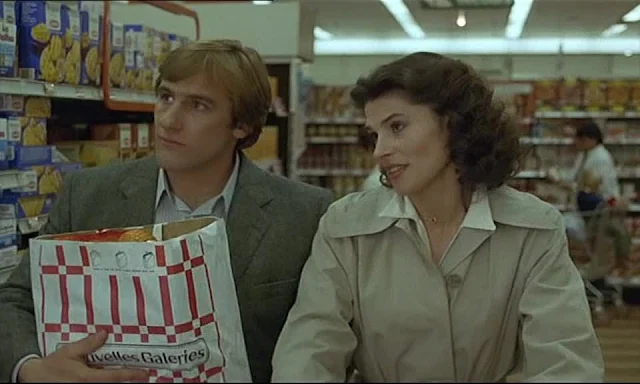 |
| Tatsuya Nakadai in Odd Obsession |
Kenji Kenmochi: Ganjiro Nakamura
Toshiko Kenmochi: Junko Kano
Kimura: Tatsuya Nakadai
Hana: Tanie Kitabayashi
Masseur: Ichiro Sugai
Dr. Kodama: Mantaro Ushio
Dr. Soma: Jun Hamamura
Director: Kon Ichikawa
Screenplay: Keiji Hasebe, Kon Ichikawa, Notto Wada
Based on a novel by Jun'ichiro Tanizaki
Cinematography: Kazuo Miyagawa
Music: Yasushi Akutagawa
As with so many foreign-language films, the English title Odd Obsession seems to miss the mark a little, but the Japanese title, Kagi, which means "The Key," also seems a little off-target, even though it was taken from the novel on which the film was based. If I were retitling it, I'd call the film something like "The Jealousy Cure," which is not only in keeping with the plot but is also supported by the way the film opens, as if presenting a case study: We see a man in a physician's white coat standing before an anatomy chart, speaking directly at the camera. He describes the various effects of aging on the body before turning away to enter the action of the scene. We learn that he is Kimura, an intern in the clinic of Dr. Soma, who is treating a post-middle-aged man, Kenji Kenmochi, for sexual dysfunction. The doctor advises Kenji that the injections he has been giving him are probably ineffective, and that he should try to find other ways of dealing with the problem. Kimura has also been dating Kenji's daughter, Toshiko, and he has let slip to her that her father is seeing Dr. Soma. She passes the information along to her mother, Ikuko, whom we then see visiting Dr. Soma to find out if there is something she can do for her husband. It's an awkward encounter: Ikuko is rather embarrassed by the subject of their sex life, but she resolves to do what she can to help. Kenji then discovers that his libido is stirred by the thought of anyone having sex with his much younger wife, and when Kimura comes to dinner, Kenji begins to plot ways of bringing his wife and the young and handsome intern together. As Kimura and Ikuko begin an affair -- the key from the Japanese title is the one she gives Kimura to the back gate -- Kenji's sex drive reawakens, with the added consequence of dangerously elevating his blood pressure. Odd Obsession is not so much a case study, however, as an ironic dark comedy, one in which the follies of the various characters lead to what might be a tragic conclusion if viewed from another angle than the one Ichikawa chooses. It's also a showcase for the versatility of Tatsuya Nakadai and Michiko Kyo, who reteamed seven years later for the more serious The Face of Another (Hiroshi Teshigahara, 1966). I think Ichikawa is a little too interested in "trying things out," such as the opening segue from breaking the fourth wall into starting the action of the film, or the freeze frames that interrupt the action in the opening section, tricks that don't feel consistent with the rest of Odd Obsession.
Watched on Turner Classic Movies

























